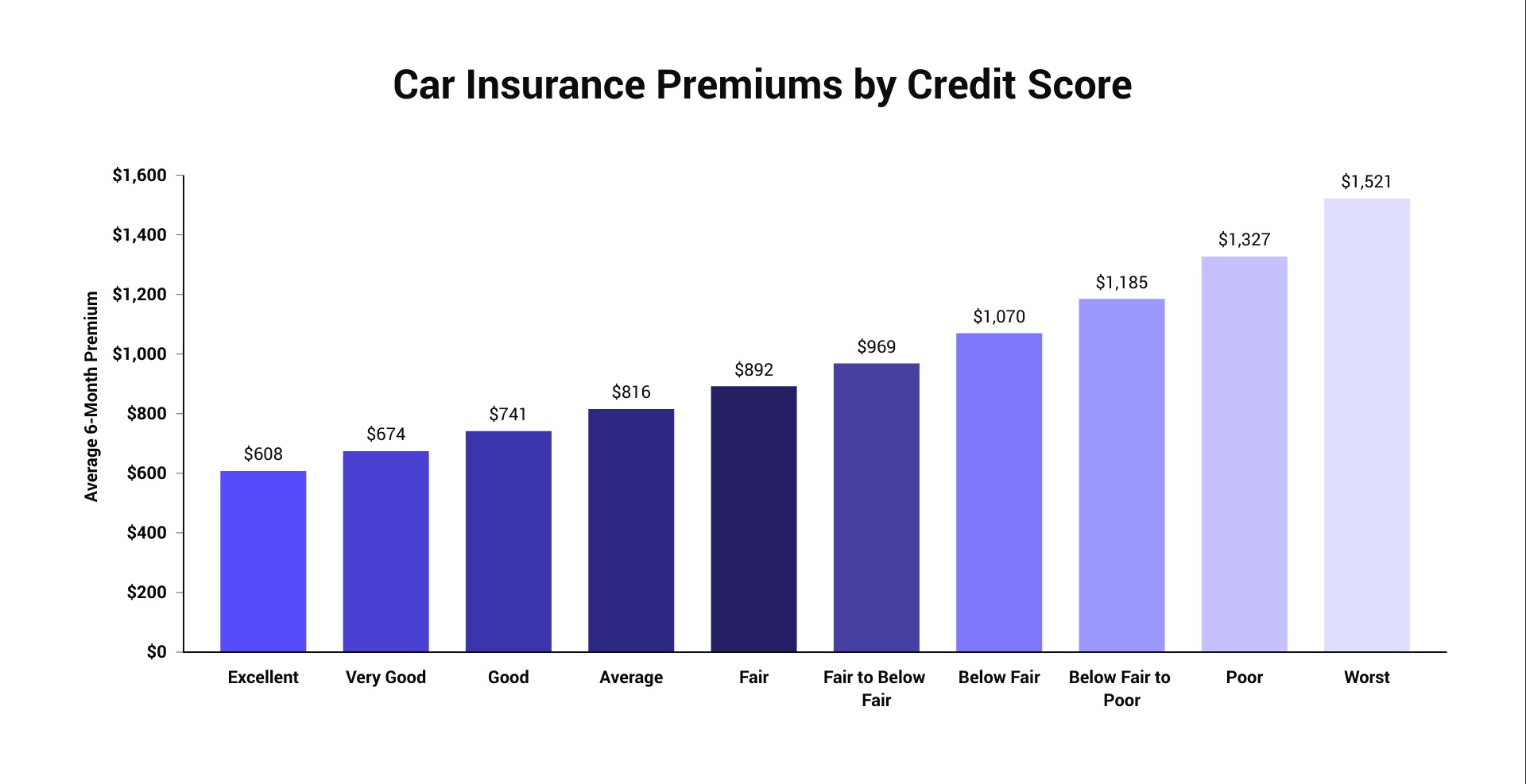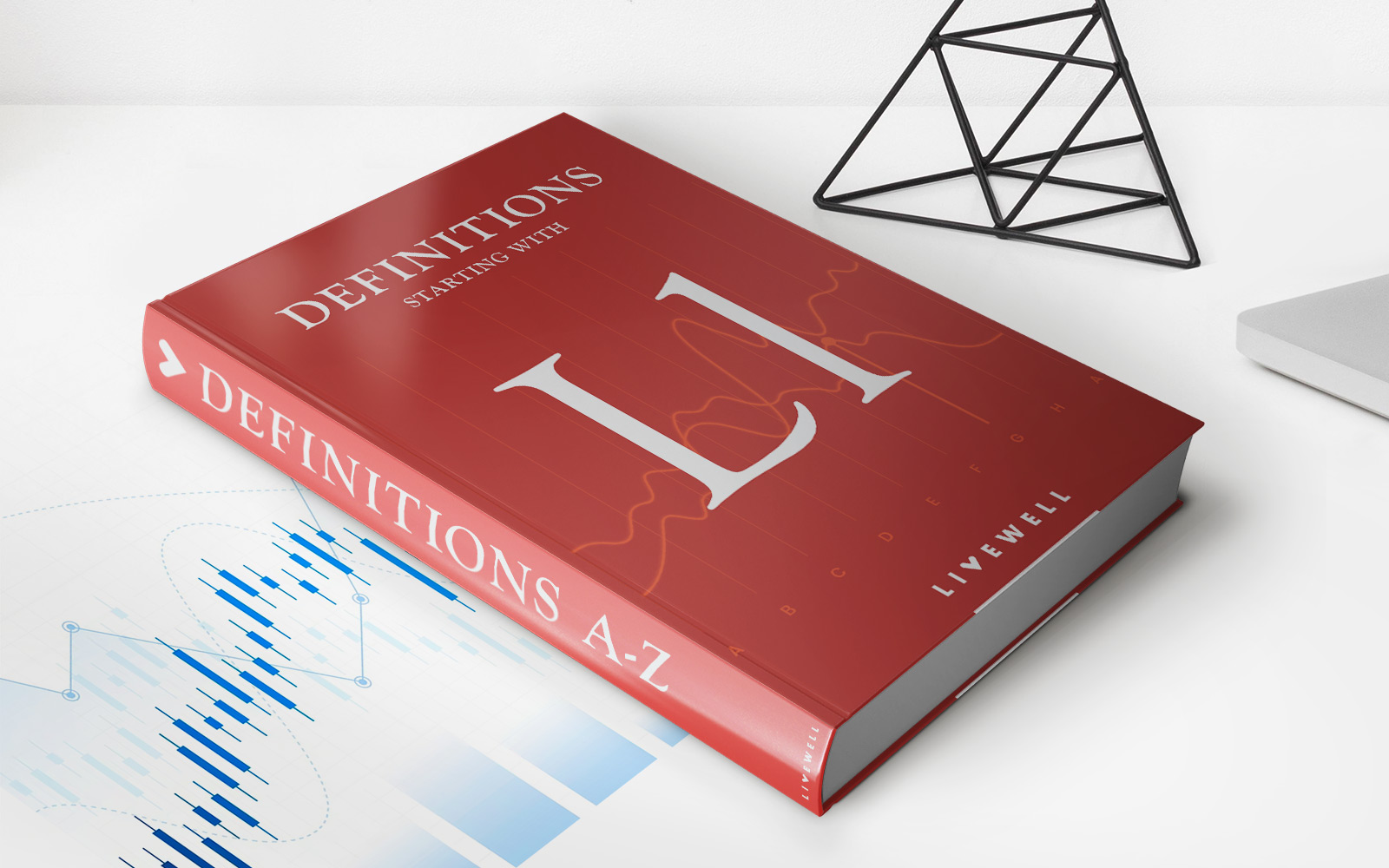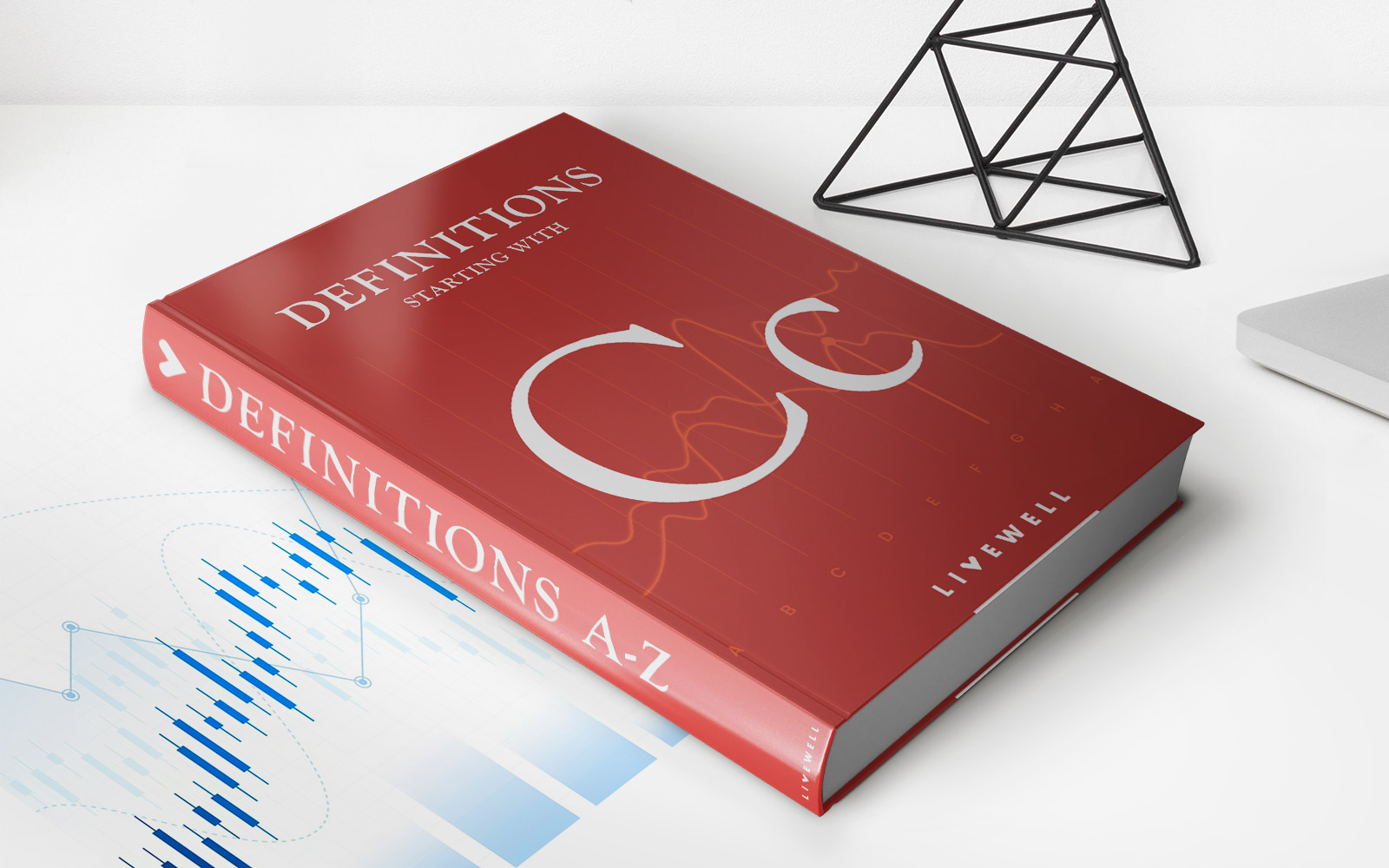Home>Finance>How Much Does Disability Insurance Cost Per Month?


Finance
How Much Does Disability Insurance Cost Per Month?
Modified: December 30, 2023
Find out the average monthly cost of disability insurance and secure your financial future with affordable and reliable coverage.
(Many of the links in this article redirect to a specific reviewed product. Your purchase of these products through affiliate links helps to generate commission for LiveWell, at no extra cost. Learn more)
Table of Contents
- Introduction
- Factors Affecting Disability Insurance Cost
- Average Cost of Disability Insurance
- Cost of Short-Term Disability Insurance
- Cost of Long-Term Disability Insurance
- Cost of Group Disability Insurance
- Cost of Individual Disability Insurance
- Additional Factors that Impact Disability Insurance Cost
- How to Get an Accurate Quote
- Conclusion
Introduction
Disability insurance is a crucial financial safety net that provides income protection in the event of a disability preventing you from working. The cost of disability insurance varies depending on several factors, including the type of coverage, the amount of coverage, your age, occupation, health condition, and the insurance provider.
Most people underestimate the risk of disability and the financial hardship it can cause. According to the Social Security Administration, about 25% of Americans will experience a disability lasting at least one year during their working years. This statistic highlights the importance of having disability insurance coverage to safeguard your finances.
The cost of disability insurance is typically quoted as a monthly premium, which you pay in exchange for coverage. The premium varies based on the level of risk associated with your occupation and your personal health and lifestyle choices. Understanding the factors that affect disability insurance cost is important when considering purchasing a policy.
In this article, we will delve into the different factors that influence disability insurance cost and provide insight into the average costs of both short-term and long-term disability insurance policies. We will also discuss the variations in cost between group and individual disability insurance options and highlight additional factors that can impact the overall cost. Finally, we will provide tips on how to obtain an accurate quote to ensure you make an informed decision on your disability insurance coverage.
Factors Affecting Disability Insurance Cost
The cost of disability insurance is influenced by several key factors, each contributing to the overall calculation of premiums. Understanding these factors can help you determine the expected cost of your disability insurance coverage. Here are the main factors that impact disability insurance cost:
- Age: Age plays a significant role in determining the cost of disability insurance. Typically, younger individuals can secure coverage at lower premium rates since they are considered less likely to experience a disability. As you age, the risk of developing health conditions or disabilities increases, resulting in higher premium costs.
- Occupation: Your occupation is a crucial factor in disability insurance cost. Insurance providers categorize occupations based on their risk level. High-risk jobs, such as construction or aviation, come with higher premium costs due to the increased likelihood of accidents or injuries. On the other hand, low-risk occupations, such as office workers, may have lower insurance premiums.
- Health Condition: Your overall health and medical history greatly impact the cost of disability insurance. Insurance providers assess your health condition through medical underwriting. Pre-existing conditions or chronic illnesses may result in higher premiums or even exclusions from coverage. It’s essential to disclose accurate information regarding your health to the insurance provider during the application process.
- Benefit Period and Waiting Period: The benefit period refers to the length of time that disability benefits will be paid out after the waiting period. Longer benefit periods and shorter waiting periods usually result in higher premium costs, as they provide more extensive coverage and quicker access to benefits.
- Income and Coverage Amount: The amount of coverage you choose and your income level will directly impact the cost of disability insurance. Typically, the higher your income and desired coverage amount, the higher your premium will be.
- Elimination Period: The elimination period is the duration from the onset of disability until benefits become payable. Choosing a shorter elimination period means you can access benefits sooner, but it also increases the premium costs.
Insurance providers consider these factors, among others, to assess the risk associated with providing disability insurance coverage. By understanding how these factors impact the cost of disability insurance, you can make informed decisions about the type and level of coverage that best suits your needs.
Average Cost of Disability Insurance
When it comes to the average cost of disability insurance, it’s important to note that the actual premium you’ll pay can vary significantly based on the factors mentioned earlier. However, we can provide a general idea of what to expect in terms of cost.
Short-term disability insurance is designed to cover a portion of your salary for a limited period, usually up to one year. The average cost for short-term disability insurance typically ranges from 1% to 3% of your annual income. For example, if your annual income is $50,000, you can expect to pay between $500 and $1,500 per year for short-term disability insurance.
On the other hand, long-term disability insurance provides coverage for an extended period, sometimes until retirement age. The average cost for long-term disability insurance is usually estimated at around 1% to 3% of your annual income. Using the same example as before, if your annual income is $50,000, you can expect to pay between $500 and $1,500 per year for long-term disability insurance.
It’s important to note that these figures are rough estimates based on industry averages and can vary depending on factors such as age, occupation, health condition, and the insurance provider. Additionally, the cost may increase if you choose to add optional riders or increase your coverage amount.
Keep in mind that group disability insurance, which is typically offered through an employer, may have lower average costs compared to individual disability insurance policies. Group policies often have lower underwriting standards and can be more affordable since the risk is spread across a larger pool of individuals.
Ultimately, to get an accurate estimate of the cost of disability insurance tailored to your specific circumstances, it is recommended to request quotes from multiple insurance providers or consult with a licensed insurance agent who can guide you through the process.
Cost of Short-Term Disability Insurance
Short-term disability insurance provides income replacement for a limited period, typically up to one year, if you are unable to work due to a covered illness or injury. The cost of short-term disability insurance can vary depending on several factors, including your age, occupation, health condition, and the insurance provider.
On average, the cost of short-term disability insurance is typically between 1% to 3% of your annual income. However, it’s important to note that this is just a rough estimate, and the actual cost can differ based on individual circumstances.
Short-term disability insurance premiums are usually paid monthly and calculated as a percentage of your salary. For example, if you earn an annual salary of $50,000, you can expect to pay between $500 and $1,500 per year for short-term disability insurance coverage.
Factors such as occupation and health condition play a significant role in determining the cost of short-term disability insurance. High-risk occupations, such as manual labor or jobs with a higher likelihood of injury, may result in higher premiums. Additionally, if you have pre-existing health conditions, the insurance provider may charge higher premiums or place restrictions on coverage.
It’s also essential to consider the benefit period and elimination period when evaluating the cost of short-term disability insurance. The benefit period refers to the length of time that benefits will be paid out, while the elimination period is the waiting period before benefits kick in. Opting for a longer benefit period or a shorter elimination period may increase the cost of the policy.
Lastly, it’s worth noting that the cost of short-term disability insurance can be reduced if you obtain coverage through a group policy offered by your employer. Group policies often provide coverage at a lower cost due to the collective bargaining power of the group. However, the coverage amount and terms may be more limited compared to an individual policy.
To get an accurate quote for short-term disability insurance, it is recommended to reach out to multiple insurance providers or consult with a licensed insurance agent who can assess your specific situation and provide a tailored estimate.
Cost of Long-Term Disability Insurance
Long-term disability insurance is designed to provide income replacement for an extended period, typically until retirement age, in the event of a disabling illness or injury. The cost of long-term disability insurance can vary based on several factors, including your age, occupation, health condition, income, and the insurance provider.
On average, the cost of long-term disability insurance is typically estimated to be between 1% to 3% of your annual income. However, this is a general estimate, and the actual cost can vary depending on individual factors.
The premium for long-term disability insurance is usually paid on a monthly basis and is calculated as a percentage of your income. For example, if your annual income is $50,000, you can expect to pay between $500 and $1,500 per year for long-term disability insurance coverage.
Occupation plays a significant role in determining the cost of long-term disability insurance. Jobs that are considered high-risk or involve physical labor may result in higher premiums due to the increased likelihood of disability. Insurance providers assess the risk associated with different occupations and adjust the premium accordingly.
Your health condition is another crucial factor in determining the cost of long-term disability insurance. Insurance providers typically conduct medical underwriting to assess the level of risk associated with an individual’s health. Pre-existing conditions or a history of medical issues may result in higher premiums or exclusions from coverage.
The benefit period and elimination period also impact the cost of long-term disability insurance. A longer benefit period, which provides coverage for a greater number of years, and a shorter elimination period, which is the waiting period before benefits kick in, may increase the premium amount.
It’s important to note that group long-term disability insurance, often offered through employers, may have lower average costs compared to individual disability insurance policies. Group policies benefit from the larger risk pool and may offer more affordable coverage. However, the coverage amount and terms may be more limited compared to an individual policy.
To obtain an accurate quote for long-term disability insurance, it is recommended to consider requesting quotes from multiple insurance providers or consult with a licensed insurance agent who can evaluate your specific circumstances and provide personalized estimates.
Cost of Group Disability Insurance
Group disability insurance is a type of coverage provided through an employer or professional organization that offers financial protection in the event of a disability. The cost of group disability insurance can vary depending on several factors, including the size of the group, the level of coverage, and the specific terms negotiated by the employer or organization.
The cost of group disability insurance is typically lower compared to individual disability insurance policies. This is mainly because group policies are purchased in bulk by the employer or organization, which results in lower premium rates. The risk is spread across a larger pool of individuals, offering more affordable coverage to participants.
The premium for group disability insurance is often deducted from an employee’s paycheck on a pre-tax basis, making it a convenient and cost-effective way to obtain coverage. The exact cost can vary depending on the employer’s contributions, the level of coverage selected, and other factors. Typically, the employer subsidizes a portion of the premium, reducing the cost for employees.
Group disability insurance can provide both short-term and long-term coverage, offering a comprehensive safety net for employees. The cost will depend on the terms and conditions negotiated by the employer or organization, such as the benefit amount, benefit period, and waiting period.
It’s important to note that group disability insurance may have limitations compared to an individual policy. Group policies often have less flexibility in coverage options and may not provide the same level of customization as individual policies. Additionally, coverage under a group policy typically ends when you leave the employer or organization unless you have the option to convert or transfer the policy.
Overall, group disability insurance is an advantageous option for many individuals as it offers affordable coverage and can be easily obtained through your employer or professional organization. However, it’s important to review the specific terms and coverage details of the group policy to ensure it meets your individual needs and preferences.
Cost of Individual Disability Insurance
Individual disability insurance is a type of coverage that you can purchase directly from an insurance provider to protect your income in the event of a disability. The cost of individual disability insurance can vary based on several factors, including your age, occupation, health condition, income, and the specific terms of the policy.
Compared to group disability insurance, individual disability insurance tends to have higher premiums. This is because the policy is personalized to your specific circumstances and typically offers more comprehensive coverage. The premium for individual disability insurance is based on the individual risk factors associated with your occupation and health condition.
The cost of individual disability insurance is generally calculated as a percentage of your income. On average, it ranges from 2% to 6% of your annual income. For example, if your annual income is $100,000, you might expect to pay between $2,000 and $6,000 per year for individual disability insurance coverage.
Factors such as occupation and health condition play a significant role in determining the cost of individual disability insurance. Occupations with higher inherent risks may lead to higher premiums, as they are more likely to result in disabilities. Similarly, pre-existing health conditions or certain lifestyle choices may also increase the premium cost.
The benefit amount and waiting period you select when customizing your individual policy will also impact the cost. A higher benefit amount or a shorter waiting period before benefits begin may translate to a higher premium. Additionally, optional riders, such as cost-of-living adjustments or additional coverage for specific conditions, can also increase the premium cost.
It’s essential to compare quotes from different insurance providers to ensure you are getting the best coverage at the most competitive price. Consulting with a licensed insurance agent who specializes in disability insurance can also help you navigate the process and obtain accurate quotes tailored to your specific needs.
Individual disability insurance provides you with the advantage of personalized coverage that can remain in effect regardless of your employment status or changes in your occupation. It offers a high level of flexibility and control over the terms and conditions of the policy, providing peace of mind and financial protection in case of a disability.
Additional Factors that Impact Disability Insurance Cost
While age, occupation, and health condition are significant factors that influence the cost of disability insurance, there are several other factors to consider as well. These additional factors can have an impact on the overall cost of your coverage:
- Gender: In general, women tend to have higher disability insurance premiums than men. This is because women statistically have higher rates of disability claims, longer disabilities, and higher healthcare utilization.
- Smoking Status: Insurance providers often differentiate between smokers and non-smokers in terms of disability insurance premiums. Smokers are considered to be at higher risk for certain health conditions, which can lead to disabilities.
- Policy Features and Riders: The inclusion of additional features or riders in your disability insurance policy can increase the cost. Optional riders, such as a cost-of-living adjustment, future purchase option, or own-occupation coverage, offer added benefits but may come with an additional premium cost.
- Elimination Period Length: The elimination period is the waiting period between the start of a disability and when benefits become payable. Choosing a longer elimination period can lead to lower premium costs, while a shorter elimination period will result in higher premiums.
- Geographic Location: The cost of living and healthcare expenses can vary by geographic location. As a result, disability insurance premium rates can be higher in areas with higher living costs.
- Policy Renewability: Disability insurance policies can be classified as non-cancelable, guaranteed renewable, or conditionally renewable. Non-cancelable policies offer the highest level of premium stability. Policies with guaranteed or conditionally renewable terms may have premium adjustments over time.
- Insurance Provider: Different insurance providers have various pricing strategies, underwriting guidelines, and experience with different occupations and health conditions. Shopping around and comparing quotes from different providers can help you find the most cost-effective coverage.
Each of these factors contributes to the overall calculation of premiums for disability insurance coverage. Understanding how these additional factors can impact the cost can help you make informed decisions when selecting the right policy for your needs and budget.
How to Get an Accurate Quote
Obtaining an accurate quote for disability insurance is crucial to ensure that you have a clear understanding of the cost and coverage options available to you. To get an accurate quote, consider the following steps:
- Gather Personal Information: Prepare your personal information, including your date of birth, occupation, annual income, and details of any pre-existing health conditions. This information will help insurance providers assess your risk profile and provide a more accurate quote.
- Research Providers: Research reputable insurance providers that offer disability insurance. Look for providers with a strong financial rating, good customer reviews, and experience in the disability insurance market. This will help ensure that you are working with a reliable and trustworthy company.
- Request Quotes: Contact multiple insurance providers and request quotes for disability insurance coverage. Provide them with the necessary information and be clear about the type and amount of coverage you are seeking. Consider requesting quotes from a mix of individual and group disability insurance providers to compare options.
- Work with a Licensed Insurance Agent: Consider working with a licensed insurance agent who specializes in disability insurance. An experienced agent can help guide you through the process, assess your specific needs, and provide tailored quotes from multiple providers. They can also help you understand the policy features, riders, and limitations of each option.
- Compare Coverage and Cost: Once you have obtained quotes from different providers, compare the coverage and costs. Evaluate the benefit amount, benefit period, waiting period, elimination period, and any additional riders or features offered by each provider. Consider how the premiums align with your budget and the value provided by each policy.
- Review the Policy: Carefully review the policy terms, conditions, and any exclusions. Pay attention to the definition of disability, the process for filing a claim, and any limitations or restrictions that may affect your coverage. Seek clarification from the insurance provider or agent if you have any doubts or questions.
- Make an Informed Decision: Based on your research, quotes, and policy evaluations, make an informed decision about the disability insurance coverage that best fits your needs. Consider not only the cost but also the quality of coverage, the reputation of the provider, and any additional benefits or services offered.
By following these steps, you can ensure that you obtain accurate quotes and make an informed decision when selecting disability insurance coverage. Remember, disability insurance is a long-term commitment, so it’s important to thoroughly evaluate your options and choose a policy that provides adequate protection for your financial well-being.
Conclusion
Disability insurance is a crucial component of a comprehensive financial plan, providing income protection in the event of a disability preventing you from working. The cost of disability insurance can vary based on several factors, including age, occupation, health condition, income, and the type of coverage you choose.
Factors such as age and occupation impact the perceived risk of disability, influencing the premium rates for both short-term and long-term disability insurance. Your health condition and lifestyle choices also play a role in determining the cost of coverage. Additionally, the benefit period, waiting period, and coverage amount can affect the overall cost of disability insurance.
Group disability insurance, often offered through employers, tends to have lower average costs compared to individual disability insurance policies. However, individual disability insurance provides more customization options and remains in effect regardless of employment status or changes in occupation.
To obtain an accurate quote, it’s important to gather personal information, research reputable providers, and request quotes from multiple sources. Working with a licensed insurance agent can provide valuable guidance and support throughout the process.
When comparing quotes, consider not only the cost but also the coverage terms, policy features, and any additional riders offered. Take the time to carefully review the policy documents and understand the terms and conditions before making a decision.
Ultimately, disability insurance is an investment in your financial security and peace of mind. By understanding the factors that affect disability insurance cost and obtaining accurate quotes, you can choose the right coverage that meets your needs and provides you with the necessary financial protection in the event of a disability.














